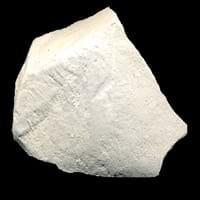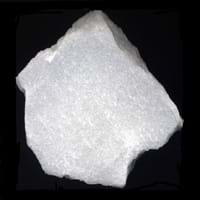Definition
Chalk is a soft, white, powdery limestone consisting mainly of fossil shells of foraminifers
Marble is a non-foliated metamorphic rock which is composed of recrystallized carbonate which is formed when limestone is exposed to high temperatures and pressures over a long time
Discoverer
Unknown
Unknown
Etymology
From old English cealc chalk, lime, plaster; pebble, from Greek khalix small pebble, in English transferred to the opaque, white, soft limestone
From the Greek marmaros, shining stone and also from the English word marmoreal meaning marble-like
Class
Sedimentary Rocks
Metamorphic Rocks
Sub-Class
Durable Rock, Soft Rock
Durable Rock, Medium Hardness Rock
Group
Not Applicable
Not Applicable
Other Categories
Fine Grained Rock, Opaque Rock
Medium Grained Rock, Opaque Rock
Texture
Clastic or Non-Clastic
Granular
Color
Grey, White, Yellow
Black, Blue, Brown, Grey, Pink, White
Durability
Durable
Durable
Appearance
Soft
Veined and Shiny
Interior Uses
Decorative Aggregates, Homes, Interior Decoration
Bathrooms, Countertops, Decorative Aggregates, Entryways, Floor Tiles, Homes, Hotels, Interior Decoration, Kitchens, Stair Treads
Exterior Uses
As Building Stone, As Facing Stone, Paving Stone, Garden Decoration
As Building Stone, As Facing Stone, Garden Decoration, Office Buildings, Paving Stone
Other Architectural Uses
Powder
Not Yet Used
Construction Industry
As Dimension Stone, Cement Manufacture, Construction Aggregate, for Road Aggregate, Making natural cement, raw material for manufacture of quicklime and slaked lime, Source of calcium
As Dimension Stone
Medical Industry
Not Yet Used
Not Yet Used
Antiquity Uses
Artifacts, Monuments, Sculpture, Small Figurines
Artifacts, Jewellery, Monuments, Sculpture, Small Figurines
Commercial Uses
Alumina Refineries, Creating Artwork, Drawing on blackboards, Gymnasts, athletes and mountain climbers use for grip, In aquifers, Paper Industry, Production of Lime, Raw material for manufacture of quicklime, slaked lime, Soil Conditioner, Whiting, Whiting material in toothpaste, paint and paper
Cemetery Markers, Commemorative Tablets, Creating Artwork, Curling, Laboratory bench tops, Paper Industry, Tombstones, Used in aquariums, Whiting material in toothpaste, paint and paper
Types
Not Available
Breccia Marble, Carrara Marble, Calacatta marble, Cultured Marble, Polished Marble, Honed Marble, Sand Marble
Features
Clasts are smooth to touch, Is one of the oldest rock, Smooth to touch, Very fine grained rock
Available in Lots of Colors and Patterns, Easily splits into thin plates, Generally rough to touch, Is one of the oldest rock
Archaeological Significance
Famous Monuments
Data Not Available
Al Aqsa Mosque in Jerusalem, Buland Darwaza in Agra, India, Capitol Hill Building, Washington DC, Charminar in Hyderabad, India, Chhatrapati Shivaji Terminus in Maharashtra, India, Ephesus in Turkey, Faisal Mosque in Islamabad, Pakistan, Humayun's Tomb in Delhi, India, Jama Masjid in Delhi, India, Lotus Temple in New Delhi, India, Louvre in Paris, France, Mysore Palace in Karnataka, India, Neuschwanstein in Bavaria, Palace of Parliament in Bucharest, Romania, Parthenon in Greece, Potala Palace in Lahasa, Tibet, Prophet’s Mosque in Medina, Qutb Minar in India, Saint Basil's Cathedral in Moscow, Russia, St. Peter’s Cathedral in Vatican City, Taj Mahal in Agra, India, Tower of Pisa, Italy, Victoria Memorial in Kolkata, India, Washington Monument, US
Famous Sculptures
Data Not Available
Ajanta Caves in Maharashtra, India, Bust of Artemis, Elephanta Caves in Maharashtra, India, Lincoln Memorial in America
Formation
Chalk is formed from lime mud, which accumulates on the sea floor which is then transformed into rock by geological processes.
Marble is a metamorphic rock produced from limestone in the earth crust. It is formed by the metamorphism of limestone.
Mineral Content
Calcite, Clay, Clay Minerals, Quartz, Sand
Garnet, Graphite, Olivine, Pyrite, Quartz
Compound Content
Ca, NaCl, CaO
CaO, Iron(III) Oxide, FeO, MgO, Silicon Dioxide
Types of Metamorphism
Not Applicable
Impact Metamorphism
Types of Weathering
Biological Weathering, Chemical Weathering
Biological Weathering, Chemical Weathering, Mechanical Weathering
Types of Erosion
Chemical Erosion, Coastal Erosion, Water Erosion
Chemical Erosion, Coastal Erosion
Grain Size
Very fine-grained
Medium Grained
Fracture
Not Available
Not Available
Porosity
Highly Porous
Less Porous
Luster
Dull
Dull to Pearly to Subvitreous
Compressive Strength
Not Available
Cleavage
Non-Existent
Perfect
Toughness
1
Not Available
Specific Gravity
2.3-2.4
2.86-2.87
Transparency
Opaque
Opaque
Density
2.49-2.50 g/cm3
2.4-2.7 g/cm3
Resistance
Heat Resistant
Heat Resistant
Deposits in Eastern Continents
Asia
Brunei, India, Indonesia, Malaysia, Singapore, Thailand, Vietnam
China, India
Africa
Cameroon, Chad, Ghana, Kenya, Malawi, Sudan, Tanzania, Togo, Zambia, Zimbabwe
Namibia
Europe
England, France, Germany, Spain, United Kingdom
Italy, Spain
Others
Not Yet Found
Not Yet Found
Deposits in Western Continents
North America
Canada, USA
Not Yet Found
South America
Colombia
Not Yet Found
Deposits in Oceania Continent
Australia
Adelaide, New Zealand, Queensland, Tonga, Victoria, Yorke Peninsula
New South Wales, New Zealand, Queensland, Victoria
Chalk vs Marble Characteristics
Though some rocks look identical, they have certain characteristics which distinguish them from others. Characteristics of rocks include texture, appearance, color, fracture, streak, hardness etc. Chalk vs Marble characteristics assist us to distinguish and recognize rocks. Also you can check about Properties of Chalk and Properties of Marble. Learn more about Chalk vs Marble in the next section. The interior uses of Chalk include Decorative aggregates, Homes and Interior decoration whereas the interior uses of Marble include Bathrooms, Countertops, Decorative aggregates, Entryways, Floor tiles, Homes, Hotels, Interior decoration, Kitchens and Stair treads. Due to some exceptional properties of Chalk and Marble, they have various applications in construction industry. The uses of Chalk in construction industry include As dimension stone, Cement manufacture, Construction aggregate, For road aggregate, Making natural cement, Raw material for manufacture of quicklime and slaked lime, Source of calcium and that of Marble include As dimension stone.
More about Chalk and Marble
Here you can know more about Chalk and Marble. The life cycle of a rock consists of formation of rock, composition of rock and transformation of rock. The composition of Chalk and Marble consists of mineral content and compound content. The mineral content of Chalk includes Calcite, Clay, Clay Minerals, Quartz, Sand and mineral content of Marble includes Garnet, Graphite, Olivine, Pyrite, Quartz. You can also check out the list of all Sedimentary Rocks. When we have to compare Chalk vs Marble, the texture, color and appearance plays an important role in determining the type of rock. Chalk is available in grey, white, yellow colors whereas, Marble is available in black, blue, brown, grey, pink, white colors. Appearance of Chalk is Soft and that of Marble is Veined and Shiny. Properties of rock is another aspect for Chalk vs Marble. The hardness of Chalk is 1 and that of Marble is 3-4. The types of Chalk are Not Available whereas types of Marble are Breccia Marble, Carrara Marble, Calacatta marble, Cultured Marble, Polished Marble, Honed Marble, Sand Marble. Streak of rock is the color of powder produced when it is dragged across an unweathered surface. The streak of Chalk and Marble is white. The specific heat capacity of Chalk is 0.90 kJ/Kg K and that of Marble is 0.88 kJ/Kg K. Depending on the properties like hardness, toughness, specific heat capacity, porosity etc., rocks are resistant to heat, wear, impact, etc.Chalk is heat resistant whereas Marble is heat resistant.





